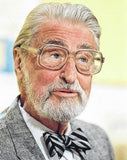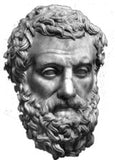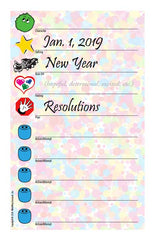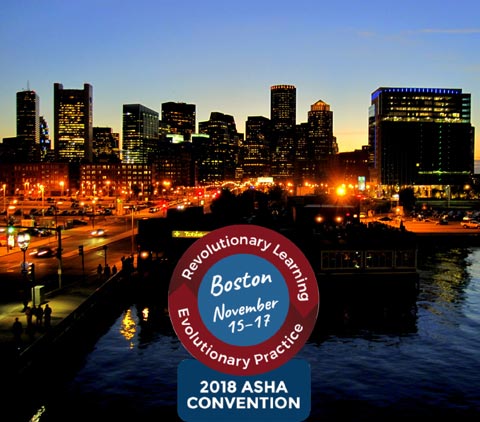Secure Checkout. FREE SHIPPING for Continental U.S. Orders over $60.
Menu
-
- Home
-
About Us
-
The Approach
-
Linking Language & Literacy
-
MindWing Learning
-
Learning Resources
-
SHOP
-
Blog
-
- About MindWing
- Our People
- Contact Us
- Your Account
- Login
-
United States (USD $)

Secure Checkout. FREE SHIPPING for Continental U.S. Orders over $60.

Feelings Activities with Dr. Seuss “Cat in The Hat” and “Marco Comes Late”
February 27, 2019
 As you know, March 2nd is the birthday of Dr. Seuss. He was born right around the corner from our MIndWing office here in Springfield, MA. Yesterday, I visited the Springfield Library to get a copy of The Cat and The Hat so I could share a lesson suggestion related to feelings. Along with that book, I found a copy of Horton and the Kwuggerbugs and Other Lost Stories. These stories were originally published in Redbook magazine between 1950-1955. Charles Cohen, a collector of all things Seuss, put together four of these selections in this book. Following The Cat and The Hat activity is an SGM analysis of one of those stories: “Marco Comes Late”...
As you know, March 2nd is the birthday of Dr. Seuss. He was born right around the corner from our MIndWing office here in Springfield, MA. Yesterday, I visited the Springfield Library to get a copy of The Cat and The Hat so I could share a lesson suggestion related to feelings. Along with that book, I found a copy of Horton and the Kwuggerbugs and Other Lost Stories. These stories were originally published in Redbook magazine between 1950-1955. Charles Cohen, a collector of all things Seuss, put together four of these selections in this book. Following The Cat and The Hat activity is an SGM analysis of one of those stories: “Marco Comes Late”...

Tech Tuesday: Supporting Narrative Development and Emotional Vocabulary
February 18, 2019

Illustration by Ariel Davis for NPR
I’m a big NPR person. It’s a great resource for listening, and for narrative! This past month I was intrigued by a feature on “EMOTIONAL GRANULARITY”—being able to name or describe your emotions more specifically. The author described an increase in stress in his life being alleviated by his working on “learning more emotion words and emotion concepts from one’s culture.” There was research to support his assertion that this self-identification was of help; according to Kashdan, Barrett, and McKnight (2015), “evidence suggests that interventions designed to improve emotion differentiation can both reduce psychological problems and increase various strands of well-being.” We can reframe this information in the light of what we might usually address as speech-language pathologists and literacy interventionists...

Teaching Perspectives with “Grumpy Groundhog”
January 22, 2019
 Last year, we got a lot of great feedback on our Groundhog Day blog, “6 Books and Activity for Groundhog Day.” Teachers seemed to especially like the last idea included in the blog, describing the groundhog’s burrow (from a List Map to a setting project, to sharing aloud). Check out last year’s blog if you haven’t seen it already! I came across another book presented in rhyme for Groundhog Day, Grumpy Groundhog written by Maureen Wright and illustrated by Amanda Haley. Below are a few ideas to use with this selection...
Last year, we got a lot of great feedback on our Groundhog Day blog, “6 Books and Activity for Groundhog Day.” Teachers seemed to especially like the last idea included in the blog, describing the groundhog’s burrow (from a List Map to a setting project, to sharing aloud). Check out last year’s blog if you haven’t seen it already! I came across another book presented in rhyme for Groundhog Day, Grumpy Groundhog written by Maureen Wright and illustrated by Amanda Haley. Below are a few ideas to use with this selection...

Teaching Aesop’s Fables and The Often Elusive “Lesson Learned” Using Story Grammar Marker
January 11, 2019
 Colleagues often ask how I would use the Story Grammar Marker® or Braidy the StoryBraid® with Aesop’s Fables. Fables are stories that teach a lesson and, because of that feature, are often part of academic curricula from grade 1 on. I decided to write a little bit about fables today because the lessons learned often relate to New Year’s Resolutions we all make! Most often fables involve animals as the characters but relate to human nature. Perspective taking, Theory of Mind and Lessons Learned are required to understand a fable. All of these are difficult for many students. The following shows the use of our Story Grammar Marker® icons to map “The Ants & The Grasshopper” fable for purposes of comprehension and expression. These icons—and our entire SGM® approach—will be 28 years old in 2019!...
Colleagues often ask how I would use the Story Grammar Marker® or Braidy the StoryBraid® with Aesop’s Fables. Fables are stories that teach a lesson and, because of that feature, are often part of academic curricula from grade 1 on. I decided to write a little bit about fables today because the lessons learned often relate to New Year’s Resolutions we all make! Most often fables involve animals as the characters but relate to human nature. Perspective taking, Theory of Mind and Lessons Learned are required to understand a fable. All of these are difficult for many students. The following shows the use of our Story Grammar Marker® icons to map “The Ants & The Grasshopper” fable for purposes of comprehension and expression. These icons—and our entire SGM® approach—will be 28 years old in 2019!...

New Year Lesson: Recalling 2018 & Planning 2019 with Story Grammar Marker!
December 07, 2018
 Activities that allow us to reflect on the past are helpful in establishing habits of reviewing what we have done well, what we enjoyed, and what we would like to change. We have included some suggested activities that use the SGM icons to add to your toolbox. Ask students to recall one day from 2018 that they especially remember. Give the students an SGM Writing form or a Student Marker to plan their story. Give students time to fill in notes on the sheet and/or practice with the student marker and then, students could orally share their stories with one another...
Activities that allow us to reflect on the past are helpful in establishing habits of reviewing what we have done well, what we enjoyed, and what we would like to change. We have included some suggested activities that use the SGM icons to add to your toolbox. Ask students to recall one day from 2018 that they especially remember. Give the students an SGM Writing form or a Student Marker to plan their story. Give students time to fill in notes on the sheet and/or practice with the student marker and then, students could orally share their stories with one another...

Tech Tuesday: ASHA Beantown Wrap-Up, Part 1
November 20, 2018
 This past week featured the American Speech-Language Hearing Association’s annual national convention in our home state (and my home city of Boston)! MindWing presented and exhibited at the convention and I was proud to be part of two presentations that incorporated MindWing’s tools with context-setting resources including both technology and picture books. I was thrilled to present another edition of an oral seminar describing the helpful pairing of picture books and apps for contextualized language intervention. As this year’s ASHA theme focused on evolution and innovation within the field of speech-language pathology, this presentation centered around pairings that aligned with social studies and science topics (Boston also is a “Hub” of both disciplines). Some of the background within this presentation centered on why SLPs and literacy interventionists might seek to incorporate social studies and science topics in our work...
This past week featured the American Speech-Language Hearing Association’s annual national convention in our home state (and my home city of Boston)! MindWing presented and exhibited at the convention and I was proud to be part of two presentations that incorporated MindWing’s tools with context-setting resources including both technology and picture books. I was thrilled to present another edition of an oral seminar describing the helpful pairing of picture books and apps for contextualized language intervention. As this year’s ASHA theme focused on evolution and innovation within the field of speech-language pathology, this presentation centered around pairings that aligned with social studies and science topics (Boston also is a “Hub” of both disciplines). Some of the background within this presentation centered on why SLPs and literacy interventionists might seek to incorporate social studies and science topics in our work...
